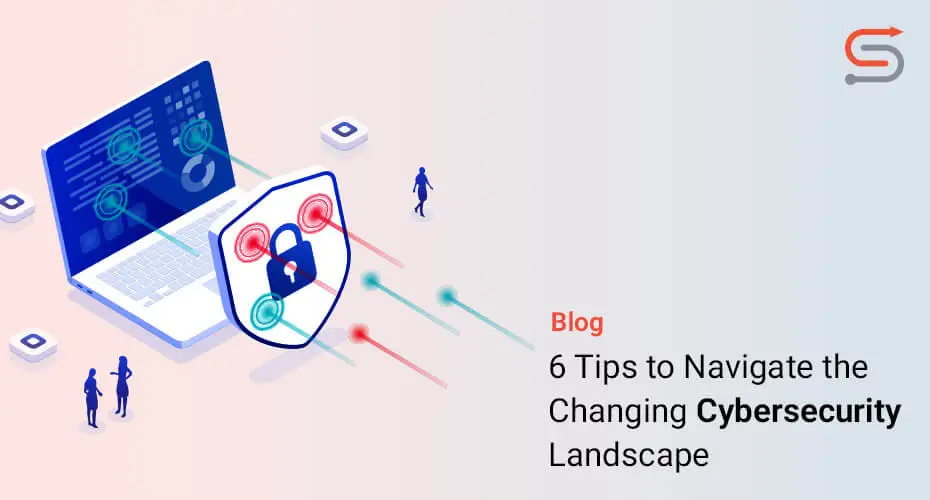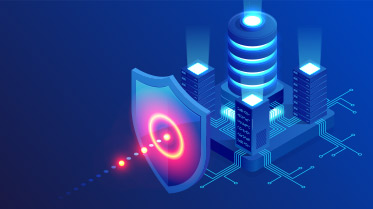November 9, 2023 - by Brandon Woolsey
In an era marked by technological advances and an ever-expanding digital presence, the significance of cybersecurity has grown exponentially. The worldwide expense of cybercrime is on a sharp increase and is projected to reach $10.5 trillion annually by 2025. To add some context, this cost was about $3 trillion in 2015.

To explore the shifting terrain of cybersecurity and discuss strategies to build cyber resilience and safeguard against emerging threats, we engaged in an in-depth conversation with Brandon Woolsey, Cybersecurity Professional Services Manager at Synoptek.
Q1: What is the current state of the cybersecurity landscape and what challenges do organizations face today?
Brandon: Certainly. The cybersecurity landscape remains in a state of constant transformation. As we rely more heavily on technology, malicious actors consistently leverage innovative methods to exploit vulnerabilities. Cyberattacks can originate from any corner of the globe, and they do not discriminate based on an organization’s size or industry. They are not limited by geographical boundaries or organizational size; they target entities across the spectrum.
Recent developments in the field of generative AI have caused a massive spike in the sophistication of cyberattacks. As bad actors exploit these advancements, organizations must also consider the use of Artificial Intelligence to strengthen their cybersecurity posture.
Q2: Social engineering attacks have emerged as a growing threat. What steps can organizations take to shield themselves from these tactics?
Brandon: Social engineering attacks are attempts to manipulate individuals into revealing confidential information or compromising security. For example, phishing emails cleverly impersonate legitimate companies (or users) to deceive individuals into disclosing sensitive data.
Defending against social engineering attacks begins with vigilance. You must always maintain a healthy level of skepticism toward unexpected emails, text messages, or phone calls. If any doubt arises regarding their authenticity, it is crucial not to click on links or disclose personal information. The mantra should be, ‘When in doubt, don’t give out.’
Q3: What steps can users take to protect themselves and the organization?
Brandon: Strong, unique passwords form the initial line of defense against unauthorized access. Alongside this, keeping software up to date is pivotal, as it frequently contains security patches aimed at safeguarding your systems from known vulnerabilities. Adhering to these practices significantly reduces the risks associated with cyberattacks.
Q4: Are there practical best practices that organizations can implement to bolster their cybersecurity posture?
Brandon: Yes, several fundamental best practices should be embraced by all:
- Exercise caution before clicking on links: Even emails or links from familiar sources can sometimes hide malicious content.
- Utilize a robust password manager: Create and securely store unique passwords for all your accounts.
- Download software exclusively from reputable sources.
- Avoid downloading software that hasn’t been authorized by your organization.
- Refrain from clicking on pop-up banners, as they often contain malware.
- Verify the identity of any person or entity you interact with.
- Protect personal or financial information, and never share it over the Internet.
- Keep all software up to date to receive essential security patches.
- Practice caution when giving out information on social media platforms.
Q5: Beyond technology and software, how does awareness contribute to cybersecurity?
Brandon: Security awareness serves as the bedrock of cybersecurity. Being well-informed about the latest threats and scams allows individuals and organizations to adapt and strengthen their defenses. Furthermore, prompt reporting of suspicious activities is essential, allowing swift actions to be taken for the protection of systems and data.
Q6: Do you have any final thoughts or additional tips for maintaining a robust cybersecurity posture?
Brandon: Cybersecurity is a collective responsibility. It is not the sole domain of IT departments; every individual within an organization plays a vital role. As cyber threats are continuously evolving, they also demand ongoing adaptation and education.
Additionally, organizations should consider proactive measures like security health checks and cybersecurity risk assessments. These services have the potential to uncover hidden vulnerabilities and provide a clear roadmap for enhancing cybersecurity.
In closing, the ever-changing cybersecurity landscape necessitates unwavering vigilance, robust defenses, and regular education. By consistently adhering to these steps, we can protect ourselves and our organizations from the ever-present menace of cyberattacks.
Additional Insights: Enhancing Cybersecurity Measures
In addition to the insights provided in our interview with Brandon, here are some essential cybersecurity practices you must explore to enhance your digital safety.
- Firewalls and Intrusion Detection Systems: Implementing robust firewalls and intrusion detection systems can act as a strong barrier against unauthorized access and proactively detect suspicious activities.
- Security Policies and Training: Organizations should develop comprehensive security policies and conduct regular training sessions to educate employees about the latest threats and best practices.
- Incident Response Plans: Every organization should have a well-defined incident response plan to effectively manage and mitigate security incidents when they occur.
- Data Encryption: Encrypting sensitive data both in transit and at rest can protect it from prying eyes, even if a breach occurs.
- Regular Security Audits: Consistent security audits and penetration testing can help organizations identify weaknesses and address them proactively.
Secure your Digital Future with Cybersecurity Managed Services
In today’s digital age, cybersecurity should be at the forefront of every organization’s priorities. By staying informed, adopting best practices, and continually evolving their defenses, they can better protect themselves and their sensitive information from the ever-evolving threat landscape.
As a leading cybersecurity service provider, Synoptek can assist organizations in conducting risk assessments, developing mitigation strategies, and implementing security measures to protect critical assets and data. Our comprehensive suite of Cybersecurity Managed Services can guide best practices and the latest cybersecurity trends to stay ahead of evolving threats.
Don’t wait; get in touch with us today to bolster your defenses and secure your digital future.
Looking for more information? Download our Cloud Security white paper to effectively manage security in the cloud!
About the Author
Brandon Woolsey is the Cybersecurity Professional Services Manager at Synoptek. He excels in owning system performance, security, and strategic alignment. With a project management focus, he prioritizes IT infrastructure, cybersecurity, and risk mitigation. His credentials include an MS in Information Security Management, numerous certifications, and expertise in process improvement (Six Sigma, Agile, SOX, etc.).



